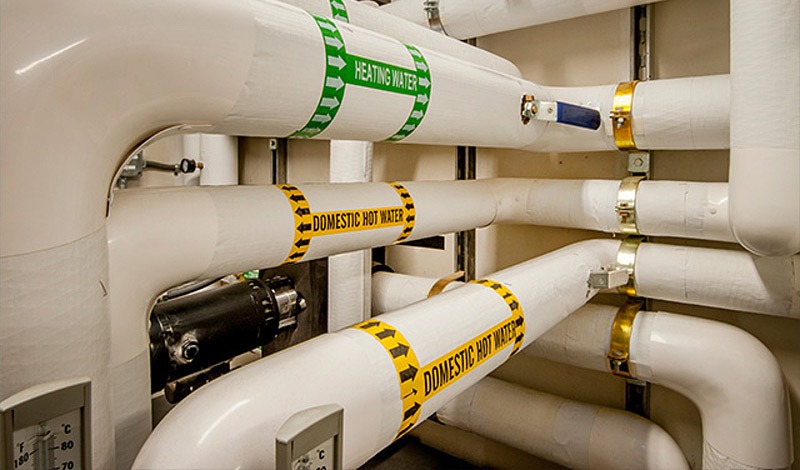Mechanical insulation is called the forgotten technology, despite its many benefits. Learn how it can save energy, reduce noise and increase equipment life.
Mechanical insulation is one of the best energy efficiency bargains available. Over a 20-year period, a mechanical insulation system can save up to 500 times the energy it takes to manufacture it, according to the National Insulation Association. Thus, mechanical insulation not only reduces facility operating costs, but it can help achieve more lofty goals, such as energy independence and improving the environment.
The many benefits of mechanical insulation
Mechanical insulation is thermal insulation on pipes, valves and all kinds of mechanical equipment, including HVAC systems, boilers and ductwork. For facilities of all types, mechanical insulation provides a number of benefits:
- Energy savings
- Condensation control
- Noise reduction
- Personnel protection
- Lower emissions
- Increased equipment life
Best applications for mechanical insulation
Examples of some of the most effective applications for mechanical insulation include ductwork, steam pipes and hot water distribution lines.
Ductwork. Insulation helps maintain the proper temperature of cool or hot air as it passes through ducts. It can also reduce HVAC fan and motor noise. Insulation levels are measured in R-value. The ASHRAE 90.1 energy efficiency standard for commercial buildings specifies duct insulation levels as high as R-12.
Steam pipes. Insulating steam lines for HVAC and process applications can significantly reduce the amount of heat lost to the surrounding air. It also guards against internal condensation. Uninsulated pipes attract condensation because the pipe is cooler than the steam. As the steam reaches the pipe, it condenses, reducing the heat transfer efficiency of the steam.
Hot water distribution lines. For facilities using boilers for space heating, insulation on distribution lines reduces heat loss in unconditioned spaces and improves overall system efficiency by delivering more heat where it is needed.
Installing mechanical insulation
Fiberglass is a commonly used insulation material. However, the material you use should match the application. Check the manufacturer’s label to make sure you’re using the proper insulation material. The American Society for Testing Materials (ASTM) has developed several important standards for testing and specifying insulation materials, such as ASTM 547 and ASTM 553.
Moisture may damage insulation, grow mold or reduce the insulation’s effectiveness. Always install mechanical insulation in or on dry surfaces free of condensation. Only install outdoor insulation in dry weather.
Gaps between insulation sections can compromise materials and increase operating expenses. Gaps on steam or cold water pipes could allow condensation to form, while gaps on hot water pipes increase heat loss. Also, there should be enough clearance around pipes, ducts or equipment to allow for proper insulation. Never combine insulation for lack of space.
Optimizing insulation performance
Value engineering is intended to reduce costs by making insulation thickness compromises, using less expensive substitutes or eliminating insulation in some cases. However, when mechanical insulation is reduced or eliminated, operating costs can increase, equipment works harder and safety may be compromised. A good tool for determining the right amount of insulation for a particular application is the free 3E Plus software package.
Mechanical insulation levels should meet or exceed those recommended by ASHRAE 90.1 or the International Energy Conservation Code. Work closely with a qualified installer to find the right insulation for your application and optimize insulation system performance.
